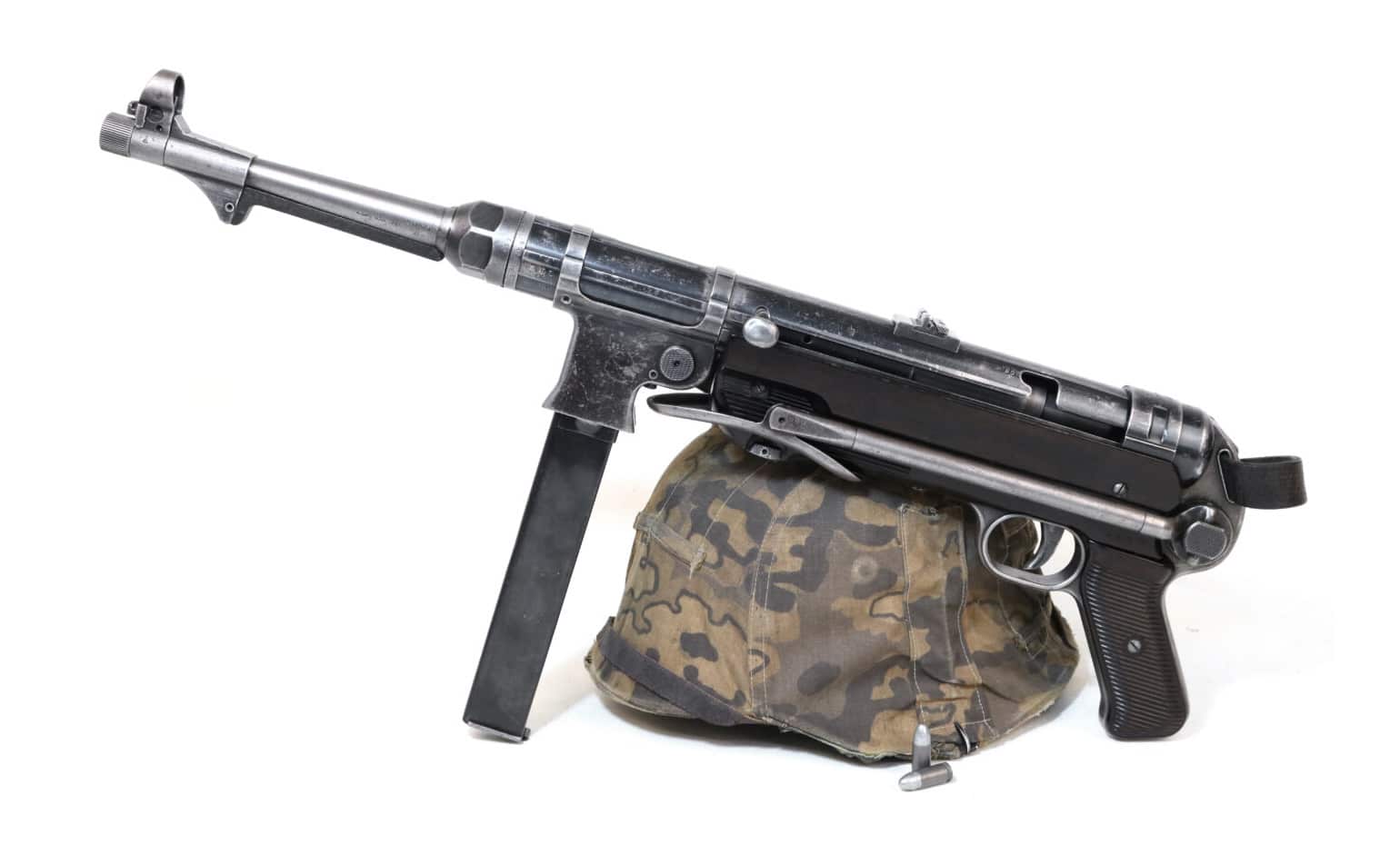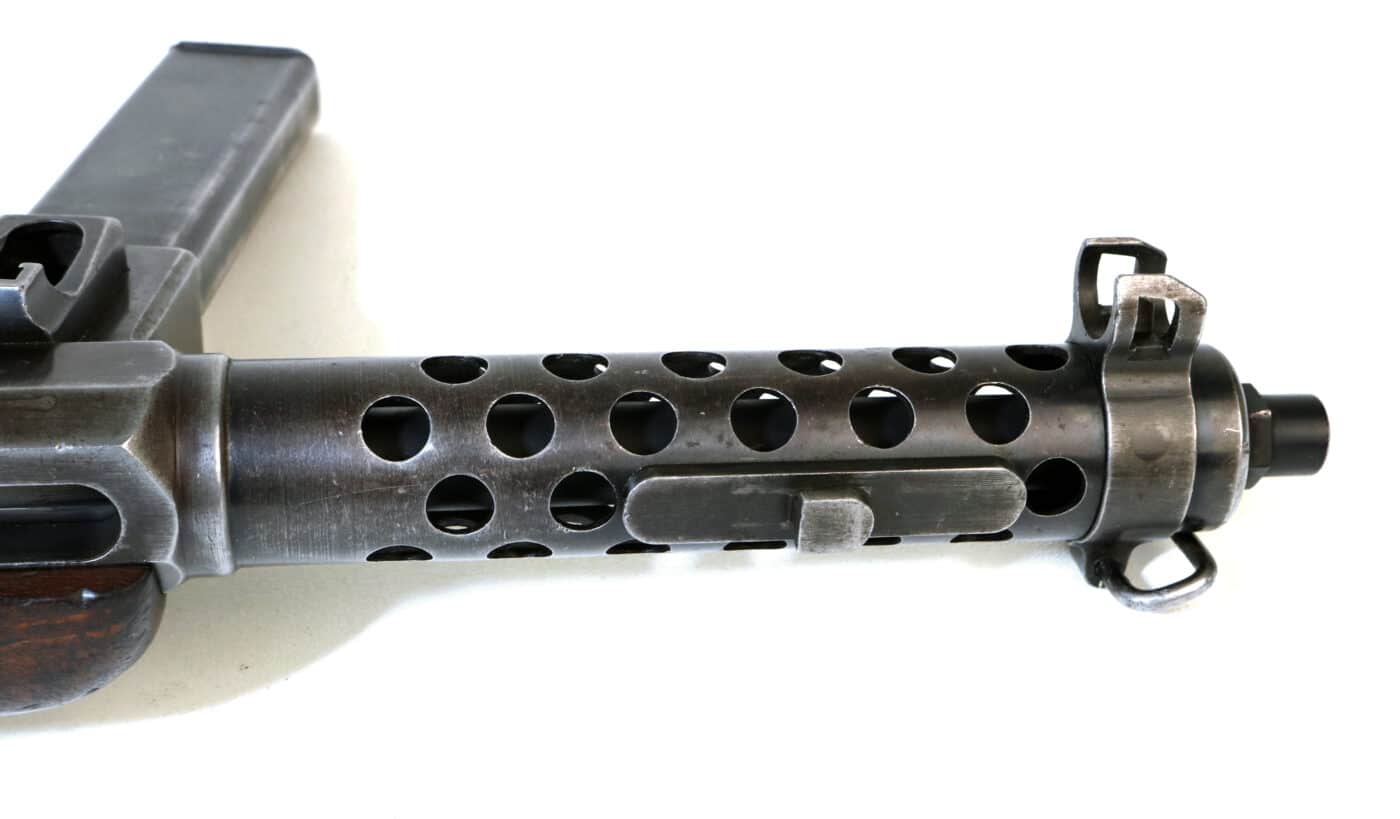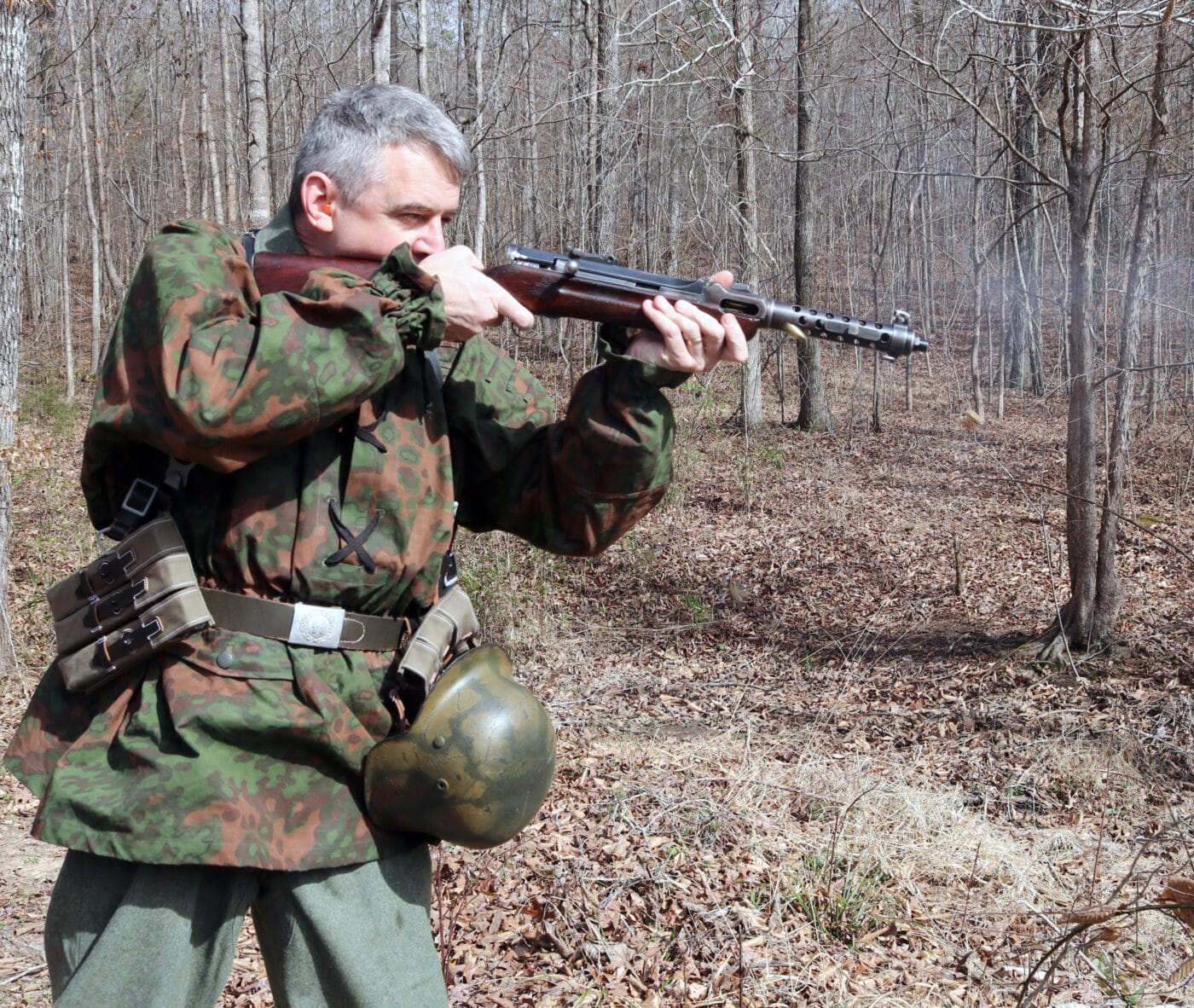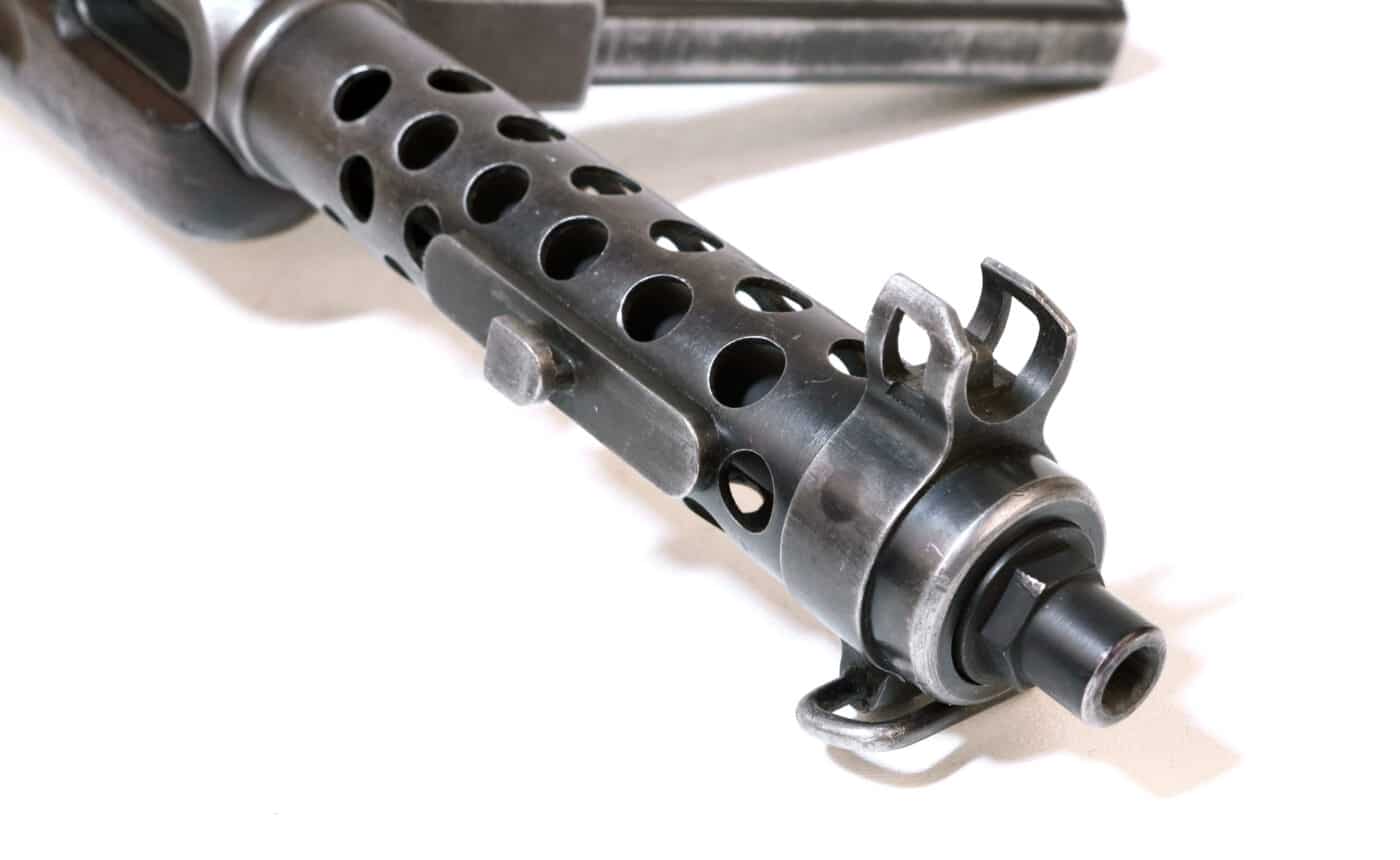Month: November 2022
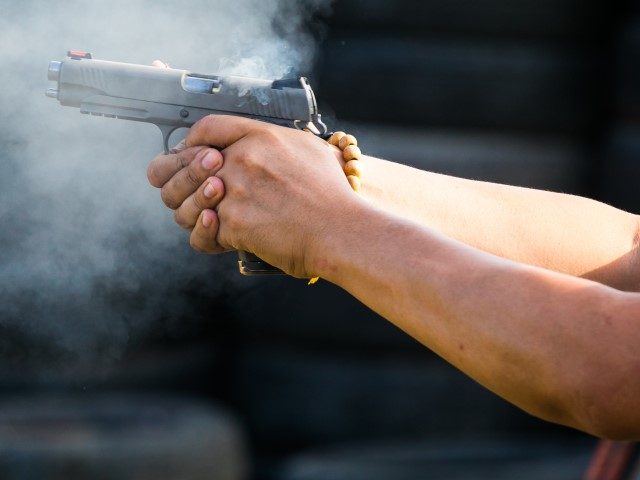
The resident of a home in DeKalb County, Georgia, opened fire on four alleged robbery suspects, killing one and wounding three, around 5 p.m. Friday.
The Associated Press reports that one of the four suspects allegedly had a gun and “exchanged gunfire” with the resident.
FOX 5 notes that police arrived on scene and found three wounded individuals outside the home. Those individuals were “23-year-old Jacqueze Grier, 18-year-old Taneaious McCune and a 15-year-old boy.”
McCune later died a short time later at the hospital.
A fourth robbery suspect, 30-year-old Telvin Thomas, was apprehended later in the night when he showed up at a hospital.
Investigators believe the shooting was “justified” and are not pursuing charges against the resident.
AWR Hawkins is an award-winning Second Amendment columnist for Breitbart News and the writer/curator of Down Range with AWR Hawkins, a weekly newsletter focused on all things Second Amendment, also for Breitbart News. He is the political analyst for Armed American Radio and a Turning Point USA Ambassador. AWR Hawkins holds a PhD in Military History, with a focus on the Vietnam War (brown water navy), U.S. Navy since Inception, the Civil War, and Early Modern Europe. Follow him on Instagram: @awr_hawkins. You can sign up to get Down Range at breitbart.com/downrange. Reach him directly at awrhawkins@breitbart.com

The S.L.R. – the 7.62mm L1A1
22 WMR ELR Project Update
At the turn of the 20th century, Japan joined the race for the self-loading pistol, but the nation’s history of firearms goes back hundreds of years.
The first guns introduced were Portuguese arquebuses brought by merchants who found their way to Japan. Once Japanese blacksmiths developed and honed their craft they produced native guns. As the 20th century dawned and nations militarized, Japanese gun designers finally were catching up so that there would be less reliance on imported weapons. Kojirõ Nambu would be a key cog in the militarization of Japan.
Rock Island Auction Company’s May 13-15 Premier Auction features a broad array of Japanese firearms, from ornate matchlocks and arquebuses to often scarce and hard-to-find early 20th century pistols, and World War II machine guns.
Guns in Japan
Black powder guns arrived with Portuguese merchants in 1543, selling arquebuses to feudal lords. Arquebuses are an early matchlock firearm that didn’t require the user to manually ignite the powder charge. They were initially given as gifts or used for hunting, but they quickly became important weapons of war during the latter shogunate.
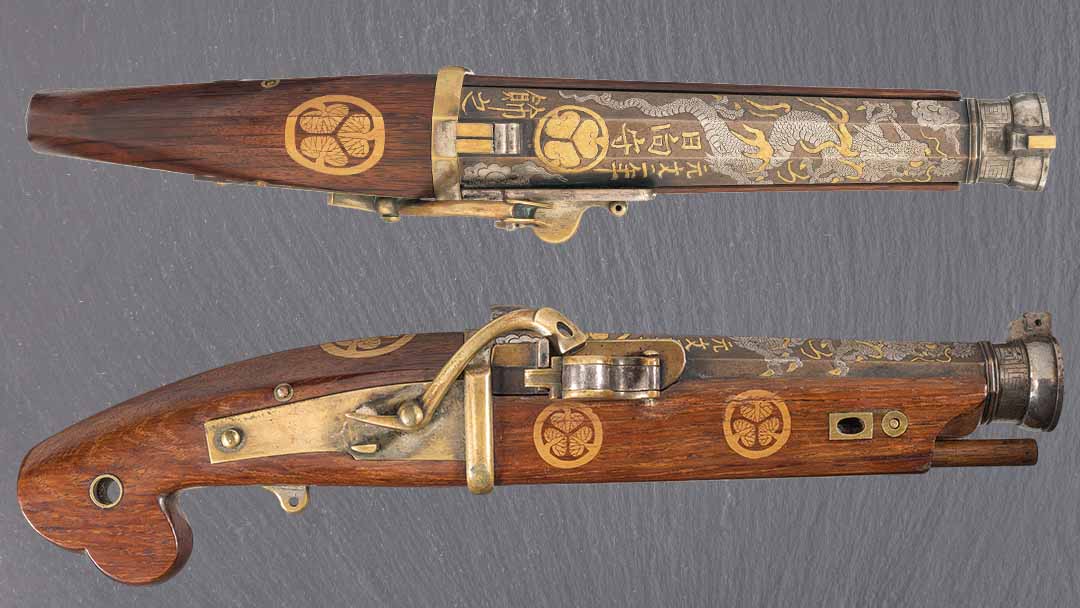
By 1563, guns were widely used in large battles, taken up by samurai’s foot soldiers. The Battle of Nagashino in 1575 was influential for its use of firearms as feudal lord Oda Nobunaga’s 3,000 arquebusiers helped turn the tide, stopping opposing infantry and cavalry. It is considered the first “modern” Japanese battle.
The first Japanese service rifle didn’t arrive until 1874. The first arsenal to produce weapons on a large scale was founded in 1871.
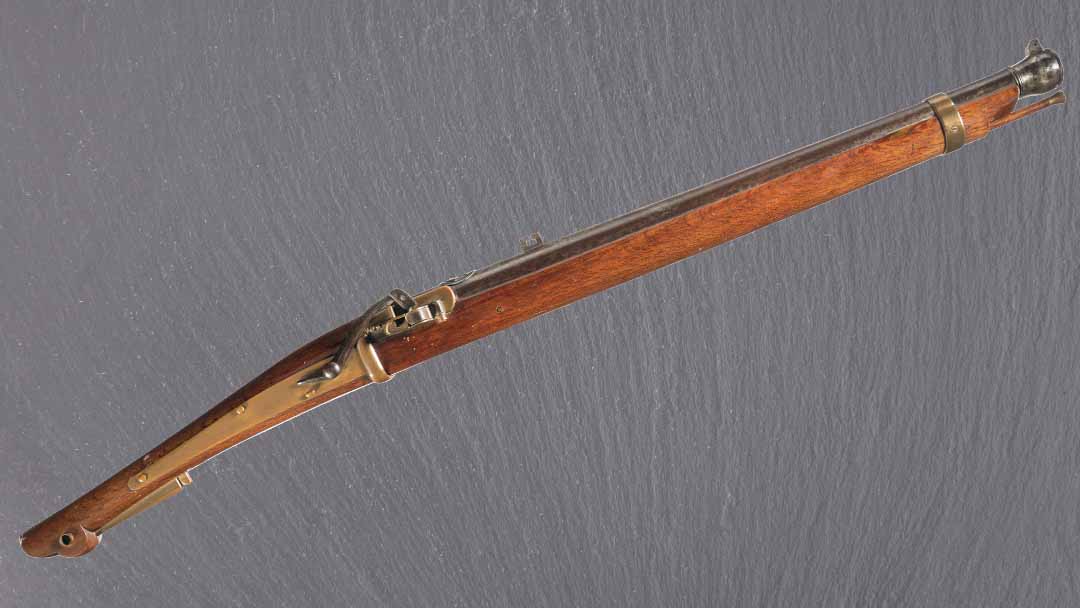
Two arquebuses are on offer in the Premier Auction. One has a number of interesting design elements, including brass, silver, and copper inlays in the breech section in the shape of koi fish, trees, and water while its breech plates form a samurai’s mask and helmet. The second arquebus has a raised mon – or crest – with two birds enclosed in a circle at the breech.
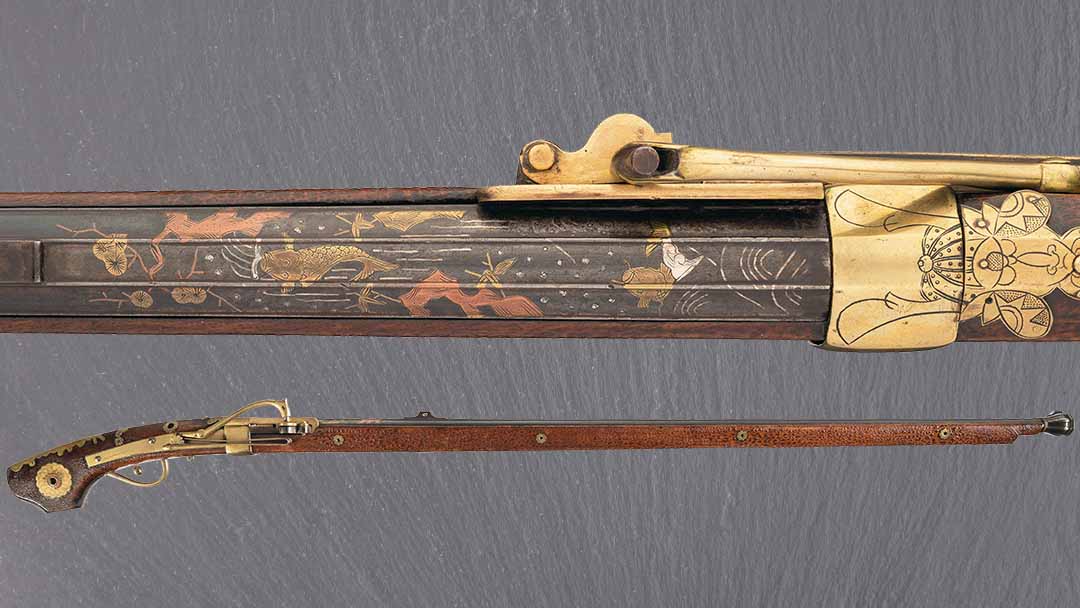
A matchlock pistol that likely dates from the Shogunate’s dominance of Japanese affairs (1600-1868) is also on offer in May’s Premier Auction. It features hammered and engraved silver as well as a gold and silver inlaid dragon in flight amongst silver clouds.
Grandpa Nambu
Nambu, considered the Japanese equivalent of legendary American gun designer John M. Browning, is a bridge between the shoguns and the modern weapons of the 20th century. His designs were a significant part of the Japanese arsenal during World War II. Nambu, whose father fought for a samurai in the 19th century, went to the Imperial Japanese Army Academy and served in the army, assigned to Tokyo Arsenal in 1897. It was at Tokyo Arsenal where he was promoted to major and started developing automatic pistols.
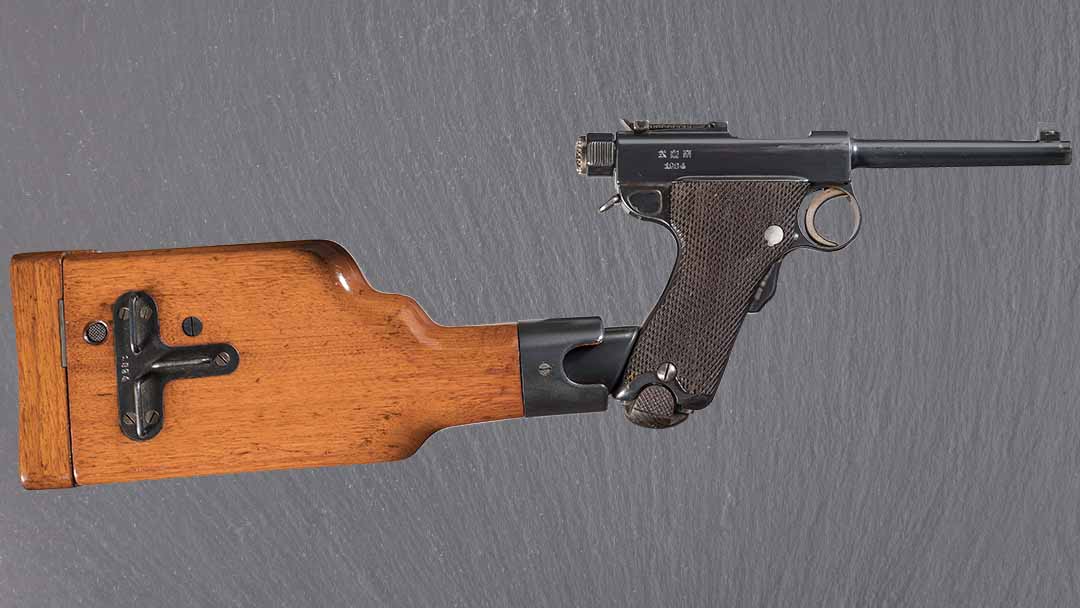
The Nambu Type A pistol was the first solo design undertaken by Nambu. The earliest Type A pistols, to about serial number 2,400, are colloquially known as a “Grandpa” Nambus. The rarest of the Type A pistols, it was produced starting in 1902, and chambered in 8mm. The pistol had a small trigger guard that made it difficult to use while wearing gloves, a fixed lanyard loop at the back of the pistol, and a slot in the back of the grip to accept a shoulder stock that converted to a wooden holster. They often had magazines with wood bases.
Most Grandpa Nambus were sold commercially to China and Siam – now Thailand.
Papa Nambu
The Modified Nambu Automatic Pistol Type A, considered the “Papa” Nambu, went into production in about 1906. They featured a larger trigger guard to accommodate a gloved hand, magazines with aluminum bottoms, and swiveling lanyard loops. It too was chambered in 8mm.
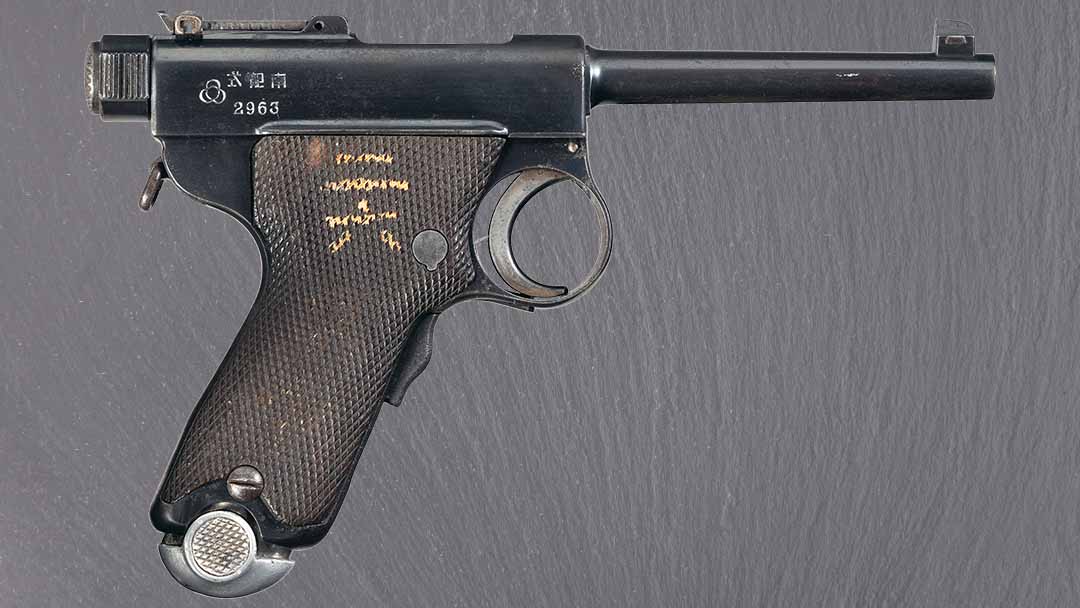
At the time, Japanese military officers were expected to purchase their sidearms, but the production cost of the “Grandpa” and “Papa” Nambus priced them too high for many junior officers. The Type A wasn’t adapted by the Japanese Army.
The Japanese Navy did adopt the Papa Nambus. About 4,600 were made before production ended in the mid-1920s.
Baby Nambu
Hoping to improve the design issues with the Type A pistols, Nambu debuted the Type B pistol or “Baby” Nambu in 1907. Trying to compete with smaller, more compact pistols from Europe and the U.S., the gun is lighter and smaller than the Type A, chambered in 7mm. It improved on some issues but still wasn’t formally adopted by the military despite praise from the army minister. The price remained too high for junior officers but was snapped up by senior officers who bought virtually all of them.
Production on the Baby Nambu ended in 1923 when the Great Kanto earthquake destroyed Tokyo Arsenal. Parts remained available so assembly continued until 1929. About 6,500 were made. The Type 14 pistol, also designed by Nambu and introduced in 1926, did become the standard issue sidearm for the military.
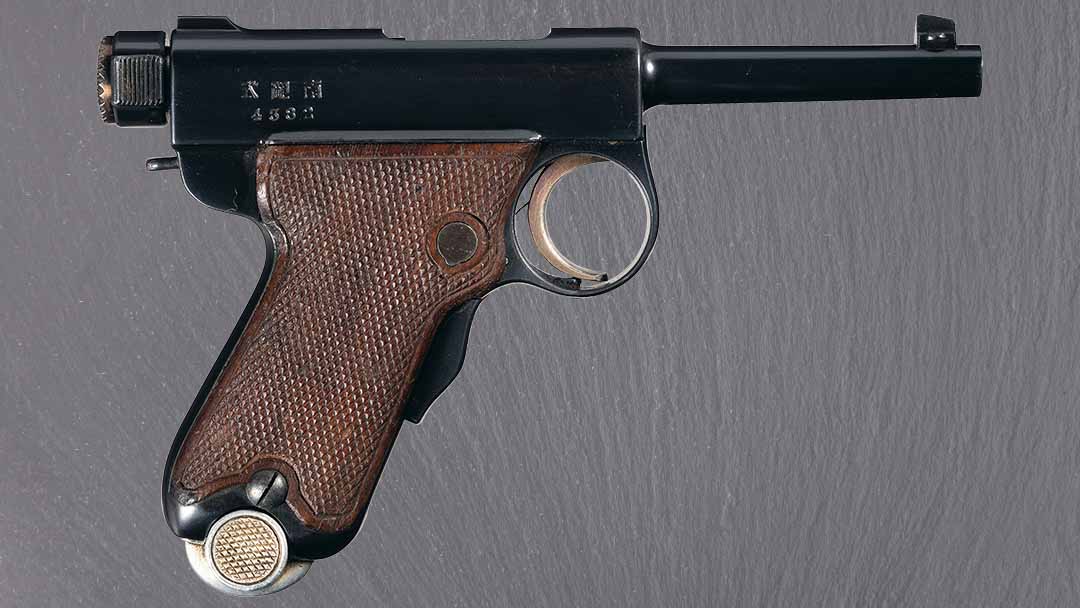
Gun designer Nambu, having been elevated to the rank of lieutenant general, left the military and created his own company in 1927. An example each of the Grandpa, Papa, and Baby Nambus are available in the May 13-15 Premier Auction.
What’s Your Type – of Machine Gun?
Nambu developed several light and heavy machine guns used by the Imperial Japanese Army in World War II.
The Russo-Japanese War of 1904-1905 convinced Japanese military leaders of the importance of machine guns to provide covering fire for advancing infantry. The Nambu-designed Type 11 light machine gun, like many of the Japanese machine guns, follow in the footsteps of the French Hotchkiss machine gun that is air-cooled and gas-operated. The Type 11 fired 6.5mm ammunition.
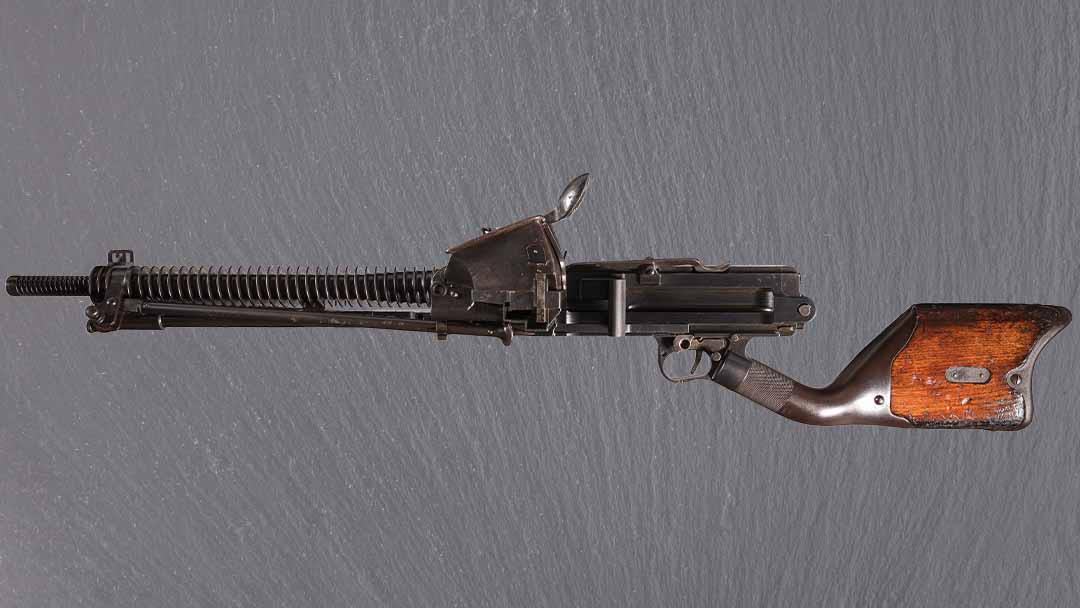
Adopted in 1922, the Type 11 was the first mass-produced Japanese light machine gun. It featured an oddly-shaped stock and a non-detachable hopper magazine instead of a removable magazine or a feed way for belt fed options. The hopper could hold up to six cartridge clips used with the standard issue Type 38 rifle. Unfortunately the light machine gun had a bad reputation with troops because the open hopper allowed in dust and grit, making it liable to jam in muddy or dirty conditions. To make matters worse, the system also used an integral pump to oil each round which tended to make things even gummier when dirt and grime got in the mix.
The Type 96 light machine gun, adopted in 1936, was similar to the Type 11, but its biggest improvement over its predecessor was that it had a removable box magazine. This improved reliability and lessened the gun’s weight. It also featured a folding bipod. Alas, it too fired 6.5x50mm Arisaka ammunition so it lacked stopping power for a weapon of its type, measuring approximately 1,966 fl/lbf. By comparison, U.S. machine guns firing .30-06 M1 ball at the time enjoyed a muzzle energy of 2,675 ft/lbf.
Despite plans to retire the Type 11, both guns saw action in World War II.
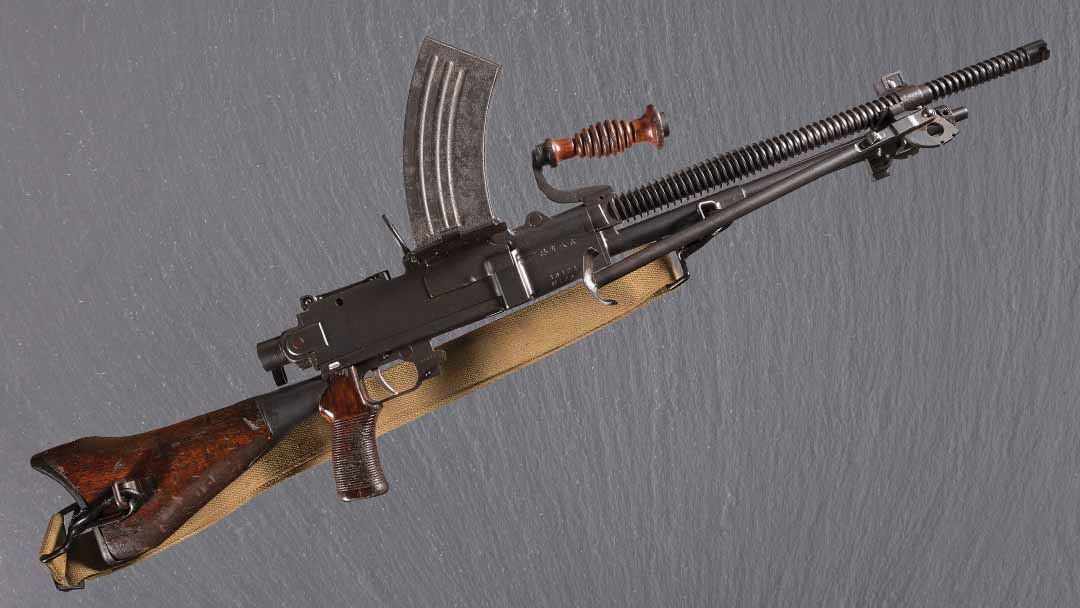
As World War II beckoned, the Japanese army wanted a more powerful light machine gun, so the Type 99 light machine gun was introduced in 1939. The gun was basically the same design as the Type 96 but chambered to handle a larger caliber, firing 7.7x58mm Arisaka ammunition (approx. 2,350 ft/lbf). The Type 99 was often issued to the best marksmen of their unit and occasionally used as a sniper rifle. It arrived too late in the war to have much impact.
The Type 99 eventually found its way into the weapon inventories of China, North Korea, and Taiwan.
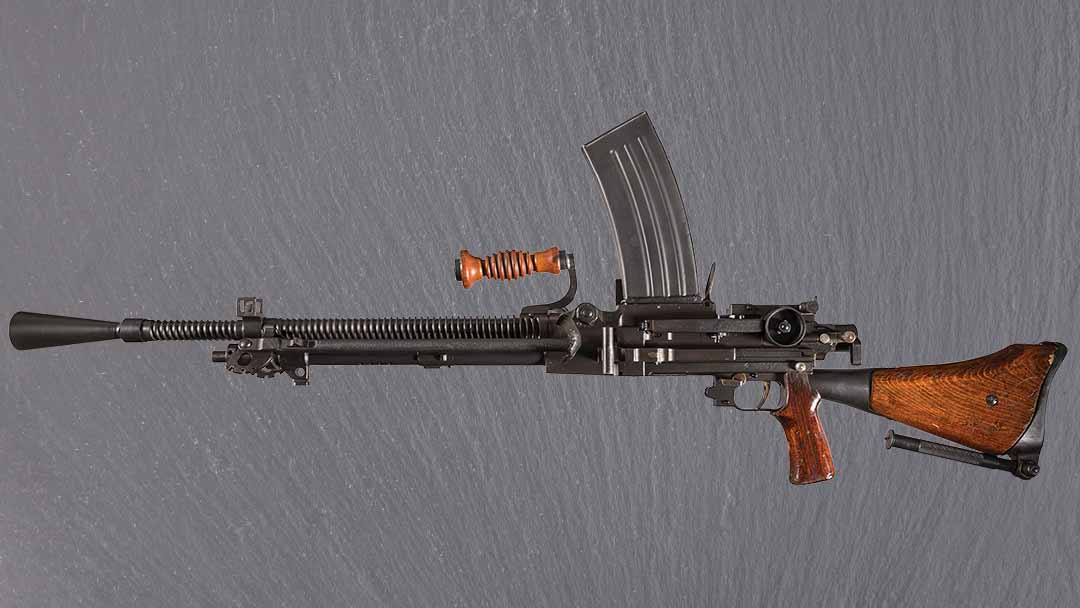
The Woodpecker
Dubbed the “Woodpecker” by Allied soldiers for the stuttering noise it made, the Type 92 was a heavy machine gun that followed the Hotchkiss model with its air cooling and gas operation. The gun spit 7.7mm ammunition, but only at a rate of 400 to 450 rounds per minute because it used strip-fed ammo, rather than belt-fed ammo.
The standard heavy machine gun for the Japanese army in World War II, the Type 92 is distinguishable by the larger cooling flanges on the barrel. The gun’s tripod was designed with carrying poles so it could be transported by two to four soldiers. Usually manned by a team of three, the gun could also be fitted with an anti-aircraft sight.
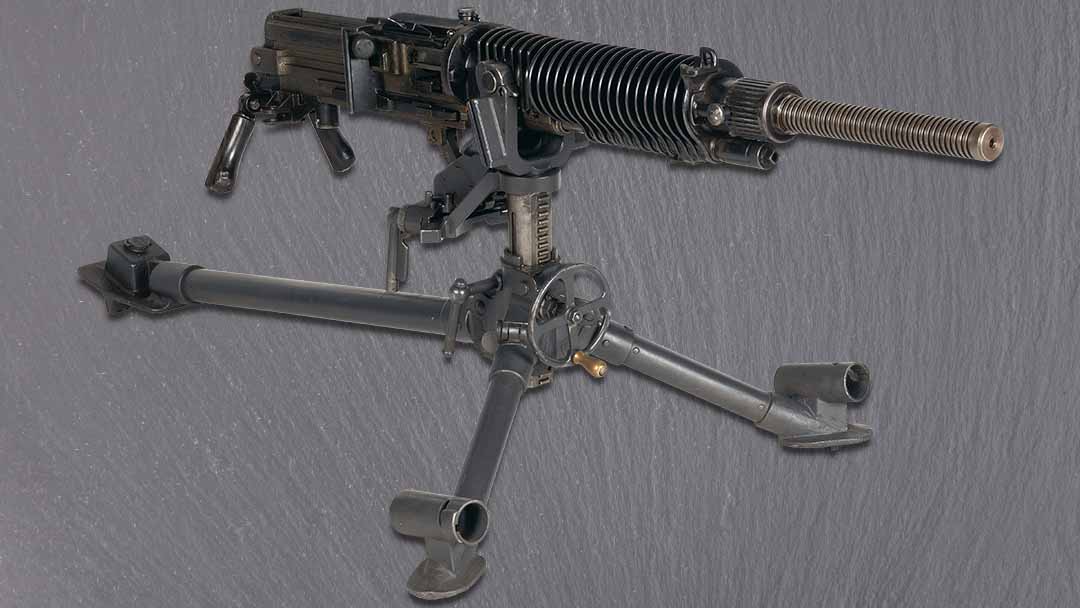
Captured Type 92 machine guns were used by U.S. and Chinese forces. The gun was also used by the North Korean Army after World War II.
Knee Mortar
Japan also developed a grenade discharger in 1929 called the Type 89 that had a pipe-like rifled barrel attached to a small base plate. It was developed to extend the range of hand grenades and could also fire 50 mm artillery shells. Similar to a mortar but more primitive, it used a firing pin striking a primer to discharge the grenade or shell. It has a range adjusting assembly that moves the firing pin housing up and down regulating the weapon’s range by controlling the distance travelled through the barrel.
Japanese manuals captured at the time showed the weapon carried strapped to the leg above the knee, but not fired from it. Learning this, the Allies called the Type 89 the “knee mortar.”
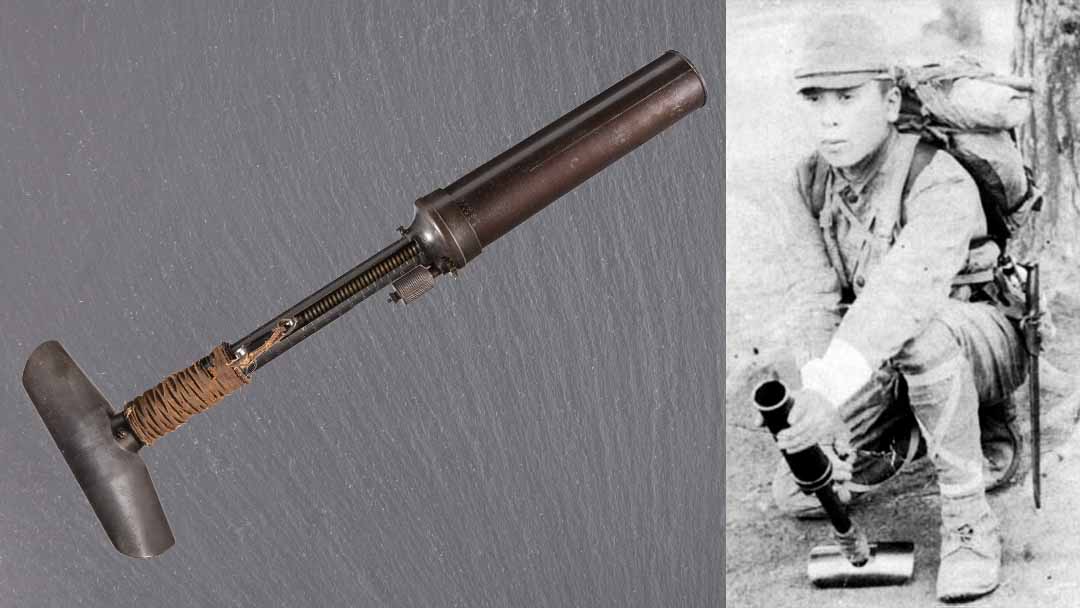
The Type 89 had an effective firing range of about 130 yards. Set on the ground, it was operated by holding it at 45 degrees and the projectile is inserted into the barrel base, then fired. The 50mm shells were either high explosive, smoke, or incendiary versions. A single soldier could operate the Type 89, but a three-man crew could send off about 25 rounds per minute.
The Type 11, Type 92, Type 96, and Type 99 are available in the May 13-15 Premier Auction as is the Type 89 grenade discharger.
Japanese Ambassador Gun
One gun on offer in the Premier Auction this report doesn’t mention is a Colt New Model 1855 Revolving Percussion Full-Stock Military Pattern Rifle presented to Muragaki Norimasa, a Japanese ambassador, in 1858 after exchanging ratified copies of the Harris Treaty which opened up commercial and diplomatic privileges to U.S. trade. This important historic treasure will be touched on separately.
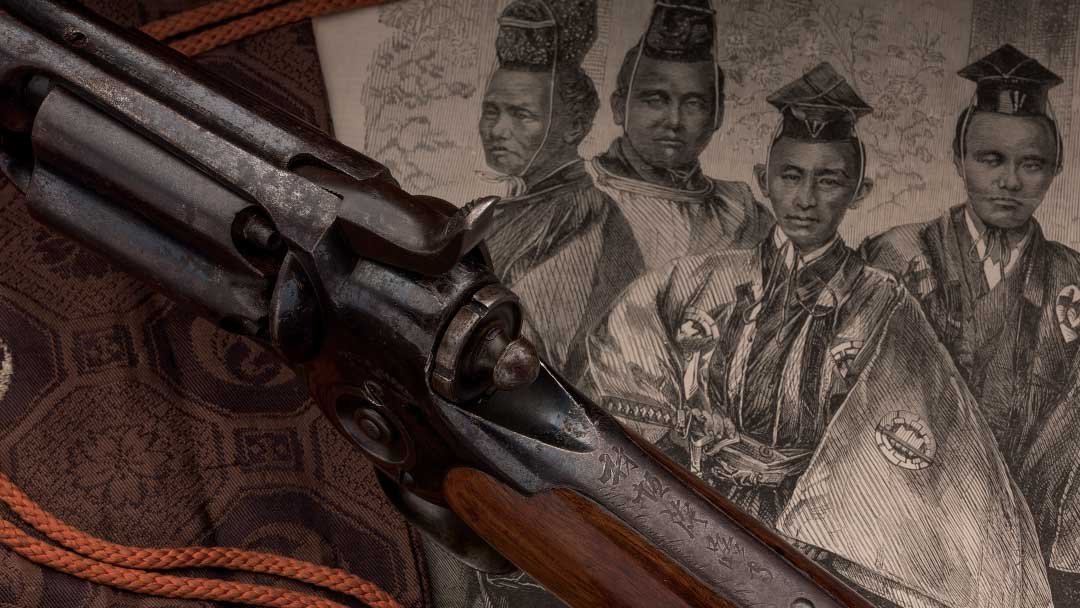
Shogun to Machine Gun
Rock Island Auction Company’s May 13-15 Premier Auction offers an eclectic mix of guns from Japanese history. They include a beautifully made matchlock and equally impressive arquebuses. A number of 20th century weapons show the legacy of weapon designer Kojirõ Nambu and his influence. These include scarce and exceptional semi-automatic pistols to some of the Japanese Army’s hard-to-find automatic firepower of World War II. For a collector looking to fill out some of these niches, the opportunity is yours.
Sources:
A look back at the Japanese Nambu Pistol, by Dave Campbell, www.americanrifleman.org
The Impact of Firearms on Japanese Warfare, 1543-98, by Delmer M. Brown, The Far Eastern Quarterly, 1948
Second World War Combat Weapons, Volume 2 – Japanese, W.H. Tantum IV and E.J. Hoffschmidt (editors)
Japanese Handguns, by Frederick E. Leithe
Type 89 heavy grenade discharger, by Jon Guttman, historynet.com
Japan’s Type 11 Light Machine Gun: The Worst Machine Gun of All Time? by Peter Suciu, nationalinterest.org
Have you ever pondered the miraculous design of the human digits? They are, in general, stubby, crude sorts of things. Anyone who has ever tried to remove a splinter without the aid of tools can appreciate their innate limitations. Human fingers are the archetypal blunt instruments to be sure. However, slave these stubby rascals to the human brain, the most refined computer in the known universe, and you have capabilities most remarkable.
Your brain weighs three pounds and is mostly fat. It consumes one-fifth of your body’s total energy output and contains about 100 billion neurons. With the world as its playground, the human brain has contrived some of the most wondrous machines.
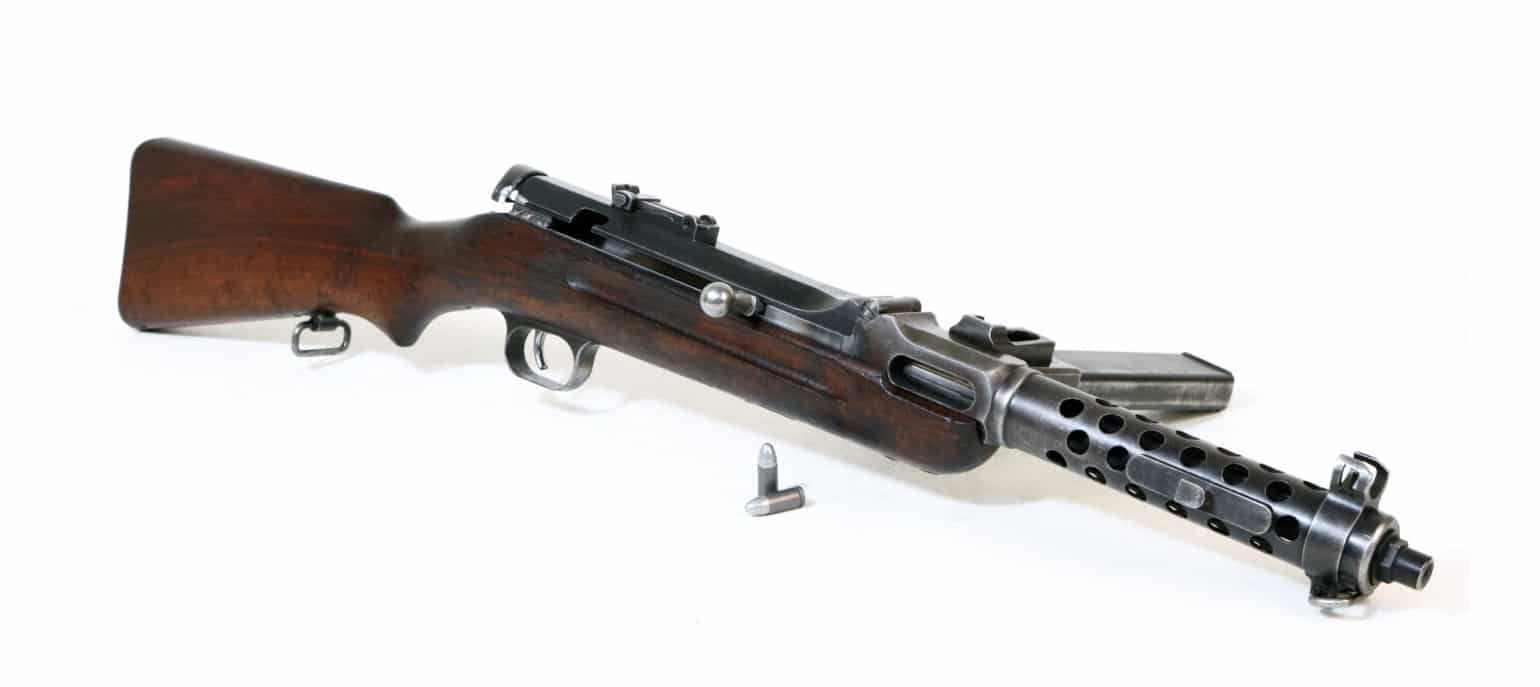
World War I was the species’ rude introduction to warfare on an industrial scale. This unprecedented hemoclysm brought us such rarefied stuff as poison gas, the combat submarine, tactical aircraft, and belt-fed machineguns aplenty. It also saw the introduction of the German MP18, the world’s first viable handheld man-portable submachinegun.
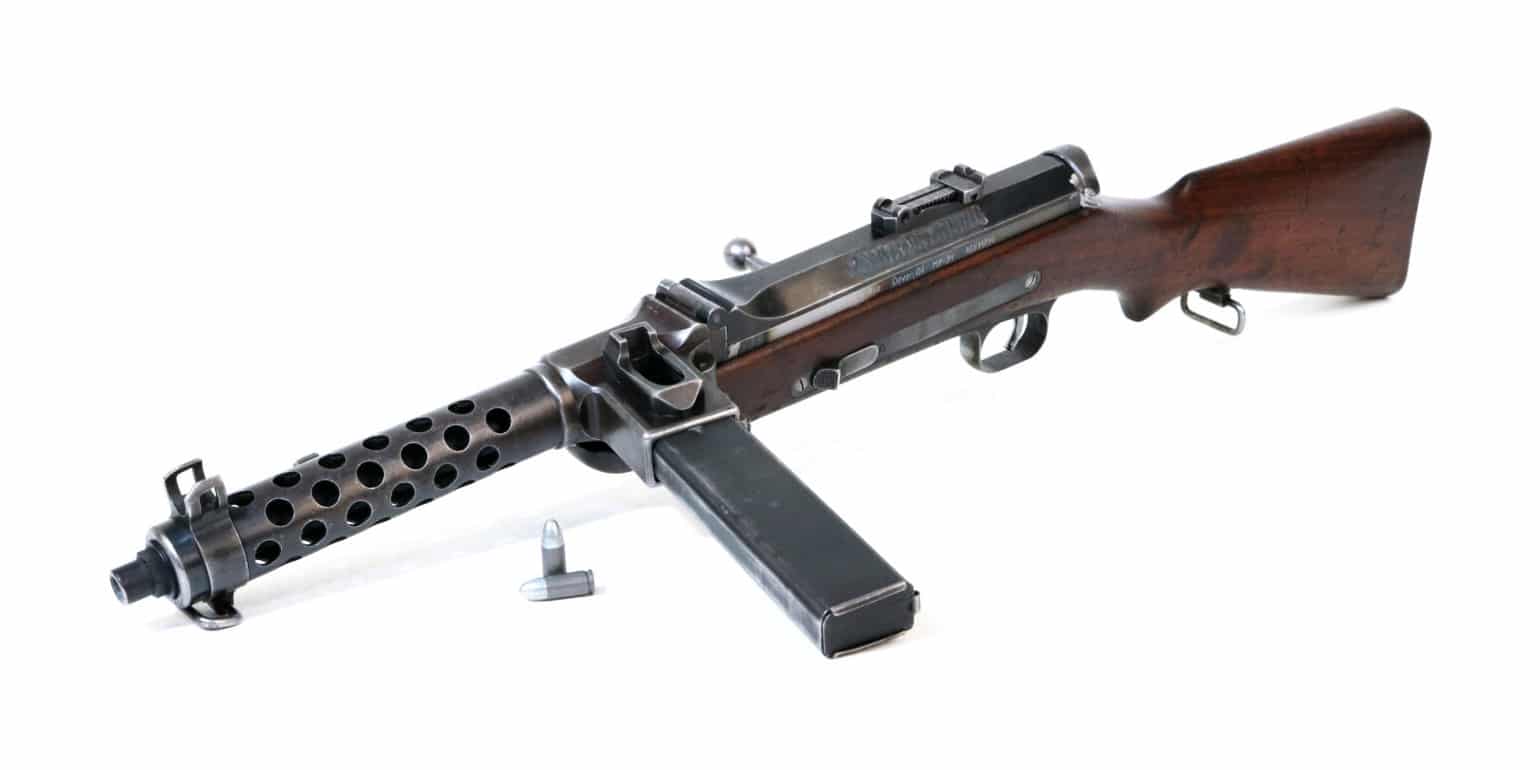
Sixteen million corpses later, the First World War ground to a bloody halt, but not before fundamentally altering the way men killed each other. Absorbing the tactical and strategic lessons learned, all the combatant nations went home to lick their wounds and plan for the next Great War. For the defeated Germans desperate to acquire the refined implements of modern combat, this required some creativity.
Convoluted Origins
The Treaty of Versailles that ended WWI restricted German pistol-caliber firearms to no more than eight rounds onboard and barrels of four inches or less, the specific vital statistics of the infantry version of the P08 Parabellum Luger pistol. As a result, the German weapons manufacturing behemoth Rheinmetall simply meandered over to Switzerland and purchased the Swiss Waffenfabrik Solothurn Company in 1929.
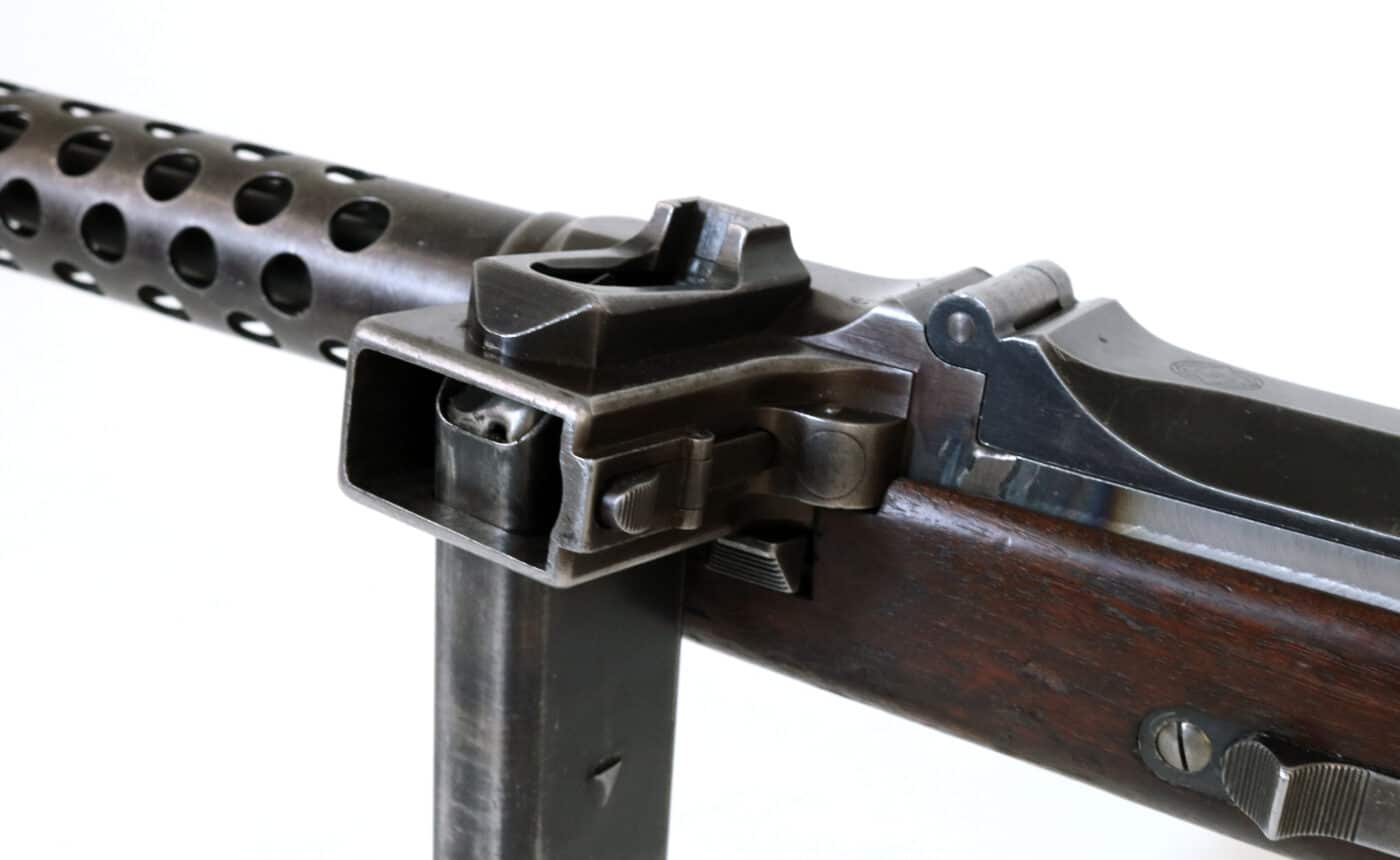
Working in secret, German and Swiss engineers produced the prototype S1-100 submachine gun. As Solothurn was a design outfit without an expansive production base, Rheinmetall then purchased a controlling interest in the Austrian Waffenfabrik Steyr company. The resulting Steyr-Solothurn Waffen AG conglomerate produced the redesignated MP34 for both military and commercial markets.
Technical Details
The MP34 is a blowback-operated open bolt selective-fire submachine gun that weighs 9.9 lbs. fully loaded. The gun was chambered for the 9x19mm Parabellum, 9x23mm Steyr, 9x25mm Mauser, 7.63x25mm, 7.65x21mm, and even .45 ACP cartridges. Most of the guns remaining today fire Georg Luger’s Parabellum round.
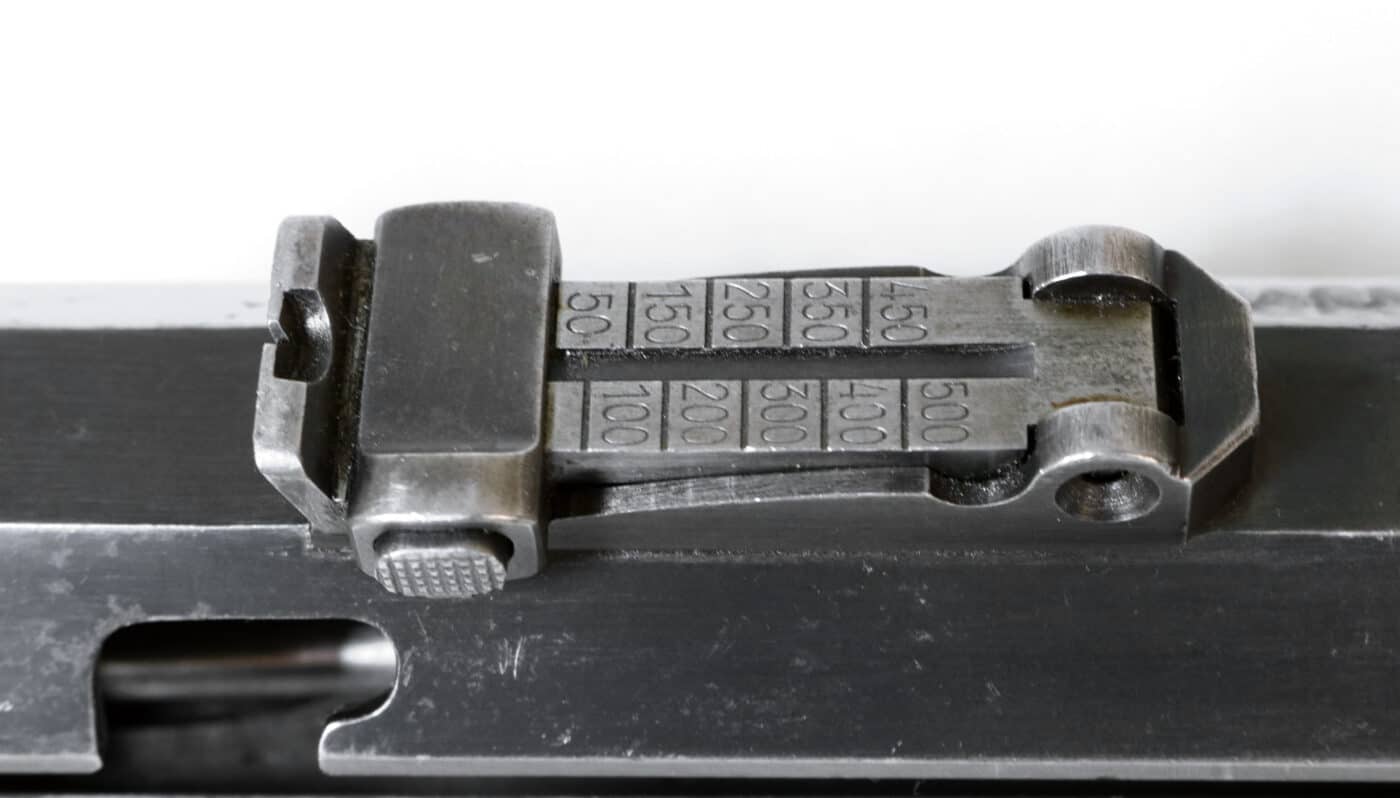
The MP34 fed from the left side via 20- or 32-round magazines canted slightly forward for optimal feed geometry. A sliding switch on the left aspect of the receiver selects between semi and fully automatic modes of operation. The heavy steel barrel shroud is an absolutely beautiful thing liberally perforated and sporting a bayonet lug.
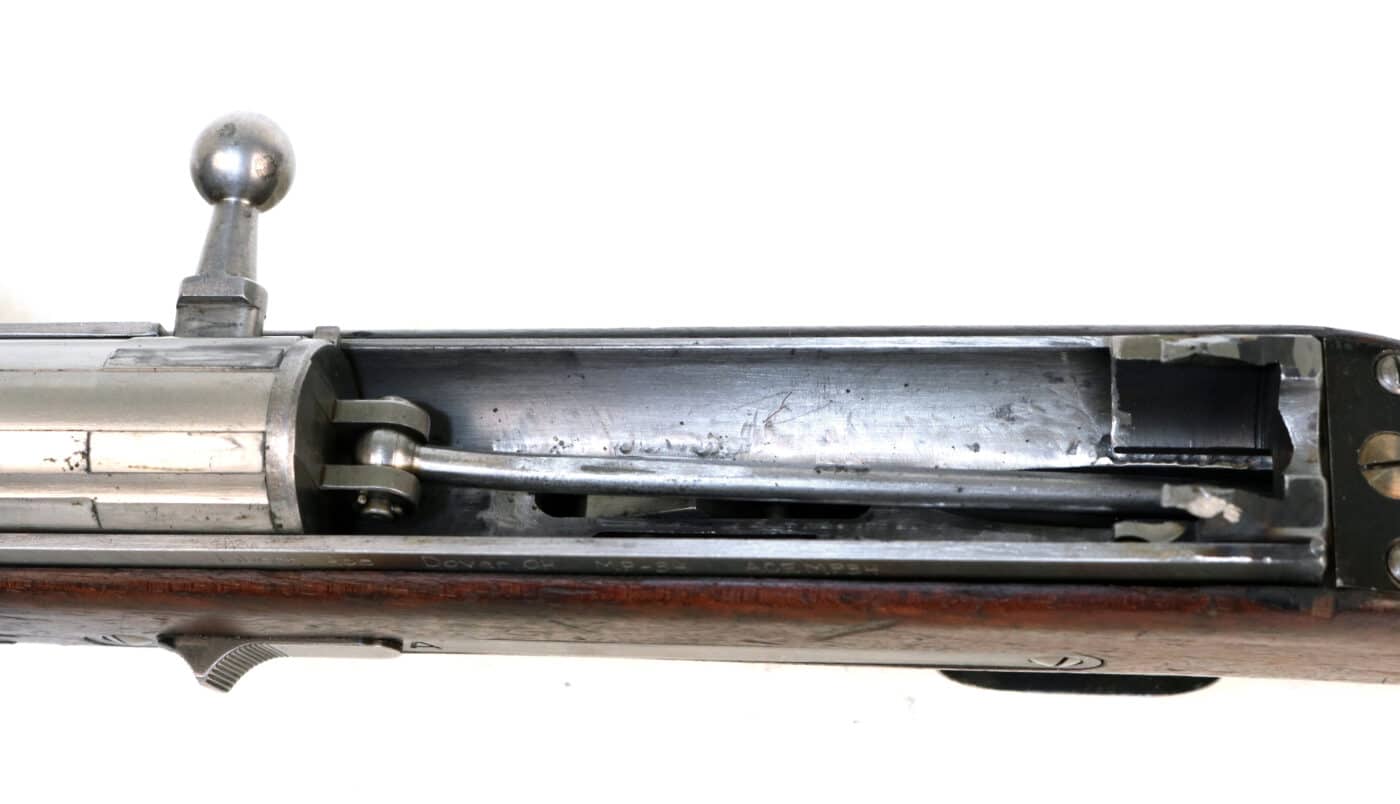
The magazine housing incorporated a curious device wherein an empty magazine could be locked in place from the bottom. Ammunition could then be quickly loaded via eight-round stripper clips charged from above. Absolutely everything about the gun is executed to a ludicrously refined standard of fit and finish.

